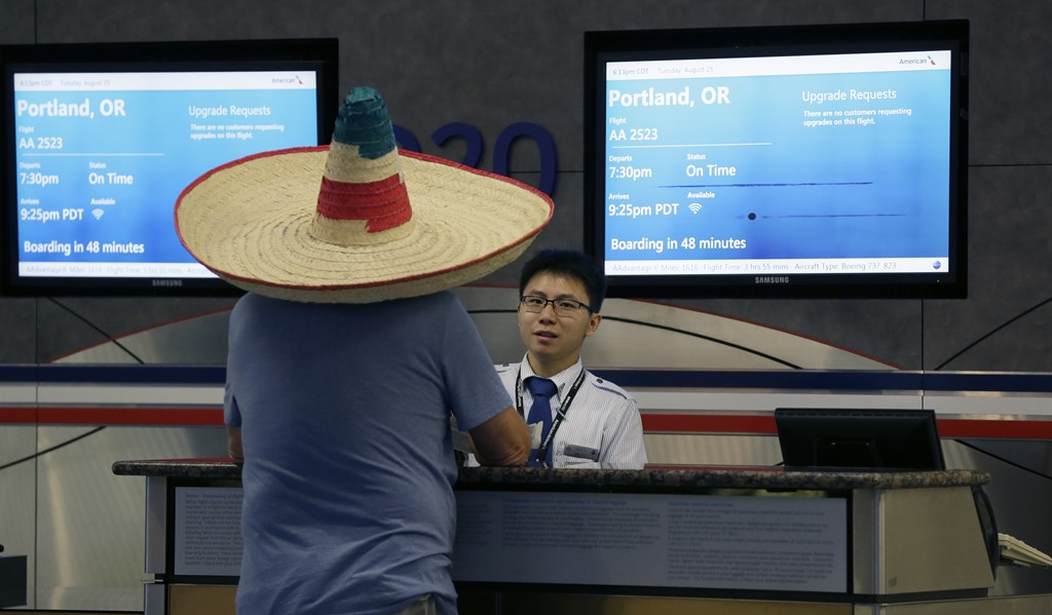I have a dream. I dream that one fine day I will come across the news item based on the latest complaint from the Social Justice Warriors over this or that bit of evil perpetrated by the white heteronormative patriarchy which is simply so outrageous that we will have reached Peak SJW. Once that happens we can all hang up our running shoes and go home to reflect on how things ever got this far into the twilight zone. Sadly, we have clearly not reached that point yet because each week brings yet another round of insanity to top the last.
The Washington Post provides us with some interesting special snowflake goodness this week on the subject of “cultural appropriation.” Author Christine Emba starts off with a bit of a head fake, almost suggesting that this phenomenon has gone too far and we need to get a grip. She’s referring to the recent bit of silliness out of Portland (where else, really?) which saw a pair of ladies who opened up a food truck being driven out of business for committing the crime of Selling Mexican Food While White.
Most obviously, the last is a situation of almost-too-on-the-nose cultural comedy: Portland. Burritos. Pop-ups. Off-putting jargon. (No doubt a millennial eating avocado toast was somehow involved.) But it’s also an excellent opportunity to examine what “cultural appropriation” is — and what harm is done when the term is overused.
The phrase describes a real problem, but it’s increasingly being weaponized as a catch-all accusation. At Oberlin College, students decried their dining hall’s General Tso’s chicken as culturally appropriative. At the Whitney Museum in New York, protesters called for a white artist’s painting of Emmett Till to be destroyed for similar reasons.
We should give full credit to Ms. Emba (with apologies for the “Ms” if you happen to be gender ambidextrous or whatever the phrase is this week) for highlighting those various incidents and putting them in the proper context, fully deserving of mockery. But at the same time we receive warning that the idea of cultural appropriation isn’t being completely sent to the woodshed here. You see, those examples just aren’t bad enough to warrant the energy of the left. She informs us that the phrase “describes a real problem” so surely we’ll be in for some examples of what truly should qualify for outrage.
Unfortunately you have to read through the entire column (which I did so you won’t have to) before finally getting to the definition I was seeking. Okay, Christine… hit me. Let’s see what you’ve got.
[T]here are those incidents in which the Western world co-opts without acknowledging the source of its inspiration. It can be demeaning to the culture it’s borrowing from, perpetuate negative stereotypes or disrespect the sacred: Think African American hairstyles touted as hip summer looks for white women when black children are punished for wearing the same styles to school, Native American ceremonial regalia worn as unearned costumes, or slang seen as low-class when used by minorities but funny and provocative when used by whites.
[RANT MODE: ON]
Rather than starting at the 10,000 foot level, let’s examine the brief list of charges brought up by the author. We begin with dreadlocks on white people. While I personally think it looks hideous in most cases I’ve seen, it’s your hair. Do with it what you will. For the record, I did see that story she linked about the school where two black girls were suspended for having hair extensions and the school administrators should be fired for it but that has nothing to do with “cultural appropriation.” Trust me, I’m a big fan of school uniforms where they are allowed and I’m encouraged when I see young gentlemen sporting a good haircut. Frankly, I’d rather we not graduate anyone out of school without their being able to demonstrate on at least one occasion that they are physically, mentally and emotionally capable of putting together a look that might get them through a job interview, but I’m also enough of a realist to understand that it’s not going to happen.
But who said that dreadlocks are exclusive to one race? I don’t much care who thought of it first, but nobody has “ownership” of a hairstyle. If you are personally offended by what someone else chooses to do with their own hair because you think they’re somehow “stealing” from you, I’d say you need to take a fresh look at that word “entitlement” that you’re always slinging around.
Next, “Native American ceremonial regalia” (primarily feathers in the case cited) is only ceremonial regalia for the people of the culture which practices those ceremonies. For everyone else it’s just feathers. You probably look foolish doing it (and many times it’s intentional foolishness for some sort of party situation) but we live in a free country where you can look the fool all you like as long as you manage to meet basic standards of decency and hygiene. As with everything else, you have the right to feel offended whenever you like, but that doesn’t give you the right to dictate fashion to others.
Then we come to, “slang seen as low-class when used by minorities but funny and provocative when used by whites.” I noticed that the author doesn’t provide a link for that one and small wonder. I’m left scratching my head. I can think of any number of words which white people “aren’t allowed to say” while it’s perfectly fine for other demographic groups. But I honestly can’t think of one example in the reverse. Can Ms. Emba cite one example of a case where white people are criticizing blacks, Hispanics or Asians for using “their language” please?
Having dispensed with the list, let’s close with the overarching failure of these arguments. This is the United States. You have free speech, freedom of expression and an historic ability to look or sound as you wish with very few exceptions. If I cook my own General Tso’s chicken and serve it in my diner it will probably taste terrible but you have zero right to tell me not to cook it. It’s food. Get over it. If I want to cut my hair in a Mohawk I am not “stealing” anything from indigenous Americans. I’m just looking like a dork. The mumu may be of Hawaiian origin and a questionable fashion choice, but my mom wore one around the house for years. She wasn’t hurting anyone.
Culture is not patented. It does not “belong” to any one group of people. Feel free to complain all you like and play the victim, but everyone else is equally free to ignore you. There is no “cultural appropriation” and you should learn to move past this nonsense.









Join the conversation as a VIP Member